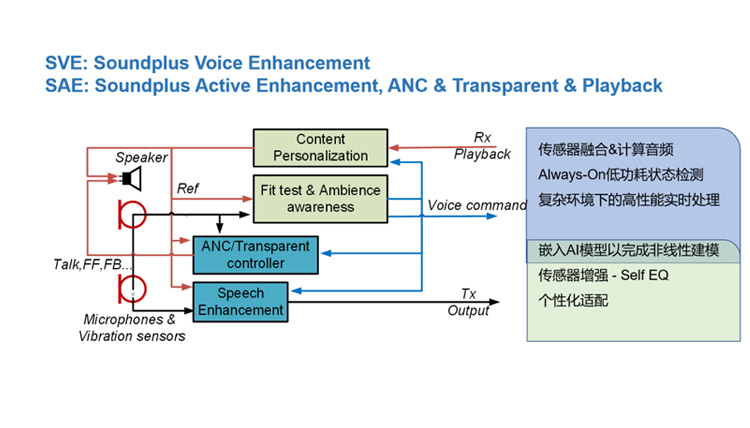In recent years, computational audio technology has been iteratively innovated one after another.
On the one hand, the application scenarios of wearable audio devices represented by TWS earphones are becoming more and more diversified. In addition to calls, the earphones’ application scenarios have been greatly expanded due to the rise of telecommuting, live broadcasting, and audio/video content production; the popularity of earphones with active noise reduction (ANC) function enables users to independently control environmental noise. Under such circumstances, how to optimize the user experience and how to avoid repeated wearings have become challenges brought by application scenarios.
On the other hand, it’s a challenge for the structural design. The size of the device is getting smaller and smaller, and it cannot have enough space to design the wind shelter structure like headphones. Therefore, the microphone is frequently exposed to the interference of wind turbulence, which affects the active noise reduction effect, transparent transmission experience and voice call recognition effect. In addition, changes in wearing conditions and personalized wearing methods will affect the listening experience. Challenges from the scenarios and wearings lead to the increasingly complex audio functions of the device. The earphone not only needs to play content, but also needs to pick up sound, respond quickly to sound commands, detect the environment, and perform signal processing.
Sound+ has been focusing on the core technology of communication acoustics, and is committed to solving the technical challenges faced by end-side equipment. Through constantly innovating and breaking through, the Company has formed a variety of solutions. At present, true wireless stereo (TWS) Bluetooth earphones from many well-known enterprises have adopted Sound+' TWS earphone solutions, providing a clearer, more comfortable and more convenient experience for human-to-human communication and human-machine interaction in complex scenarios.

SAE Active Enhancement
In order to cope with the challenges of the headsets in the complex use of the environment and personalized wear and other functions, Sound+ provides SAE(Sound+ Active Enhancement) solution.
It uses the headsets’ micro-speaker, microphone and other types of sensors to monitor the working environment, status, and user behavior in real-time, and it automatically adjusts the downlink playback content, transparency and active noise cancellation effect of the headset, providing users with an intelligent and personalized experience.
-
01
wind-noise detection module
Windnoise detection module uses a combination of microphones to analysis of environmental wind noise in real-time and returns the current wind noise level to control the behavior of the ANC filter, balancing ANC performance and wind noise interference and wind noise interference. The wind noise detection module supports different microphone combinations for environmental wind noise detection and distinguishes between noise and dialog.
-
02
ANC wind noise mode optimization: Supports Combined Feedforward and Feedback Detection
ANC wind noise mode optimization combines the acoustic performance of the headset and ANC configuration,the algorithm adjusts ANC controller parameters based on wind noise detection results, balances the wind noise interference and ANC performance, and realizes a smooth transition of the system states.
-
03
Adaptive environment ANC
The deep noise cancellation mode set to improve ANC noise cancellation tends to focus on noise reduction near 100 Hz, with a corresponding noise level rise in the high-frequency. Therefore the deep noise cancellation mode has a good noise cancellation experience in the presence of loud low-frequency noise in the environment (when high-frequency lifting is masked), but relatively quiet scenes can cause high-frequency noise lifting. Sound+ provides environmentally adaptive ANC algorithms to analyze the distribution of ambient noise and voice activity in real time, combining different ANC modes and automatically switching ANC modes to achieve a balance between noise cancellation depth and comfort.
-
04
Voice Activity Detection(VAD)
Speech recognition in wearable products, as well as automatic switching of the speak-to-chat mode, require continuous and accurate detection of the wearer's voice activity.VAD module supports a variety of input combinations,utilizing microphone array algorithms and neural network algorithms to detect the endpoints of the wearer's voice, and supports noisy environments as well as other situations such as playing music.
-
01
Industry-leading detection accuracy
-
02
Streamlined consumption of system resources
-
03
Low-power computing architecture
-
04
Easy to configure, tune and implement
-
05
Unique extra value-added features

